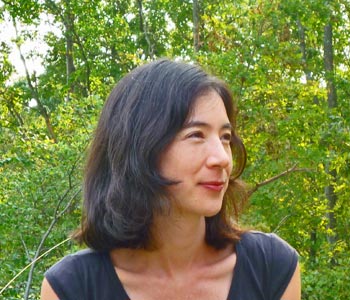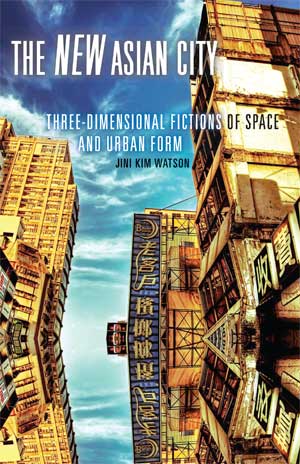
This book takes a fresh look at the so-called “Asian Tiger” success stories of South Korea, Taiwan and Singapore. While these countries have been much lauded for their incredible postwar growth rates—and are now widely viewed as the economic model for industrializing China and India—The New Asian City tells quite a different story through the dual lenses of urban development and fictional narratives.
By examining “new” spatial technologies such as the department store, the high-rise apartment block, the expressway, and the factory, The New Asian City uniquely combines a spatial history of three East Asian sites with the perspectives that literature, poetry and film offer. In this sense, the book rereads the development of certain “model” Third World countries through narratives which depict the transformation of the built environment as a variously contested and creative encounter.
The analysis takes the reader from the colonial period of the early twentieth century, when Korea and Taiwan were part of the Japanese Empire and Singapore was a British trading post, up to the end of the 1980s and the boom years of these “Asian Miracles.” The book is structured into three sections: the first dealing with the colonial city and its role in creating and maintaining imperial spaces, the second with postwar urban renewal and its effects, and the third with rural-to-urban migration and broader national landscapes.
Centrally, I argue that the economic and historical dimensions of these success stories must be supplemented by looking at the narratives that responded to dramatic changes in the urban environment.
For example, how was the mass participation of women in the new manufacturing industries, along with profound changes in domestic living spaces, portrayed in women’s writing across the three sites? Why did authoritarian leaders, from South Korea’s Park Chung Hee to Singapore’s Lee Kuan Yew, rely so heavily on urban renewal schemes in their visions of a modern society? And how was the process of urban renewal perceived by workers who both helped construct such spaces, and witnessed the loss of their former home environments? In other words, the book traces the way that certain spatial realities, taken up into narrative form, reveal the conflicts and struggles behind larger social, political and economic processes.
The book’s method of moving between urban history and fictional works thus makes an argument for the imaginative function of built form. Ideally, however, The New Asian City can be read along both of its two axes: by people interested in the nuts and bolts of Asian urban forms and political-economic development, and by people interested in this powerful body of fictional work, which includes proletarian writing, women’s novellas, city poetry, and auteur films.
The New Asian City began from the observation that there was something unique about the gleaming metropolises of East Asia, which existing theories of urban development did not account for. No doubt influenced by my early training as an architect and my experiences of living and working in East Asia, this study is a result of the personal and scholarly curiosity I felt around the phenomenon of what architectural critic Jeffrey Kipnis aptly termed “The New Asian City”—in all of its dimensions.
In terms of disciplines, the book engages with the field of urban studies to answer the question of how this particular urban form came about, at the same time it draws on my training in literary studies and theoretical work from such fields as Critical Geography (which interrogates spatial systems produced by capitalism) and Postcolonial Studies (the study of the cultural politics that are a legacy of imperialism and colonialism). Rather than focus on a single country—as is the approach of much of Asian Studies scholarship—the book’s method is emphatically comparative. I aimed to produce an inter-Asian dialogue rather than one that was implicitly East-West in its framing.
Research for this book also took me into the field of development or modernization studies, where social scientists and economists have often held up the East Asian Tigers as something of a “model” of Third World development. Indeed, in a short Transition chapter, I trace the main economic debates around Third World development (following insights by Andre Gunder Frank, Samir Amin and others), and give a history of export-led production in order to examine the spatial implications of such inventions as Economic Production Zones.
Yet by attending to perspectives from literature, poetry and film, I question the assumed “progressive” narrative of this development. Postcolonial thinkers such as Frantz Fanon, Aijaz Ahmad, Gayatri Spivak, and Edward Said, along with cultural theorists such as Walter Benjamin and Fredric Jameson, were crucial to my rethinking of these developmental spaces.
Using a variety of disciplinary sources, the book contends that Seoul, Taipei and Singapore document a founding moment of Asian industrialization, one that follows upon many of the strategies of postwar Tokyo and anticipates the now common beacons of globalization seen today in the skylines of Pudong or Kuala Lumpur.
The final three chapters of The New Asian City each examine in detail one national site and one aesthetic form: Singaporean city poetry, Taiwanese New Cinema, and Korean minjung (people’s or popular) literature.
Chapter Five’s analysis of Singapore’s long-time leader Lee Kuan Yew (in power from 1959-1990), and the poets Edwin Thumboo and Arthur Yap, is a good example of the way the last section of the book works. Here, I examine the way writings and speeches by each political leader invoke the newly built infrastructure of the country in order to narrate a national future, while literary and cinematic movements complicate this vision.
Lee Kuan Yew explicitly equates the modernism of the government’s urban renewal program and the cleanliness of the streets with Singapore’s ability to attract foreign investment and build national prosperity. In contrast, the Singaporean poet Arthur Yap writes about such physical changes in a fundamentally different way, revealing the absurdity of a developmental logic that overemphasizes productivity and applies too neatly to every housing block or reclaimed seashore.
Most interesting here is the way one can see the battle over the symbolic meaning of urban form, that is, how two different perspectives—the political-developmental and the poetic—each vie to incorporate developmental landscapes into a particular vision of the nation.
A broader aim of this book is to provide a counter-narrative to simplistic accounts of East Asian economic development, especially ones that rely on wrong-headed notions like “Confucian Capitalism” or the “natural” efficiency of the Asian worker.
Rather, what was taking place was a very singular arrangement of forces involving the political and urban legacies of colonialism, Cold War-backed authoritarian governments, the advent of export-led development, and changing relationships between country and city. The complexity—and brutality—of that story needs to be understood so that we can properly understand how this region differentiated itself from the rest of the developing world under conditions that could not, and perhaps should not, always be repeated.
In a related sense, the book also functions as a pre-history to our current moment of globalization in which all nations and economies are imagined to be intimately linked as never before, albeit on very uneven terms. What we forget is how these differing terrains—the First World, the different tiers of the developing world—were actively produced and created, largely through the mechanisms of colonialism and in the decades of decolonization following World War II.
The New Asian City is the story of how one region of the world developed from a subordinate position vis-à-vis the West, but it is not the only story possible or available. Only by understanding the complex ways that these three sites modernized and reconceptualized their urban fabric can we understand their remarkable development from colonial territories to Asian “miracles.”
Finally, one further goal of this book is to open up new analytic pathways with which to study those latest of Asian miracles, China and India. As I hope The New Asian City demonstrates, the narratives of those megastates—the ongoing battles between city and country, local forms of settlement and migration, and their emerging global and regional roles—must also be excavated and retold in “three-dimensional” form.


Jini Kim Watson is Assistant Professor of English and Comparative Literature at New York University. She received her Ph.D. in Literature from Duke University in 2006. Prior to this, she received her B.A. from the University of Queensland, Australia, studied architecture at the University of Melbourne, and also taught at Chonnam National University in Gwangju, South Korea. The New Asian City is her first book. She is currently working on a new book concerning representations of dictatorships in postcolonial literature, tentatively titled, Ruling Like A Foreigner.